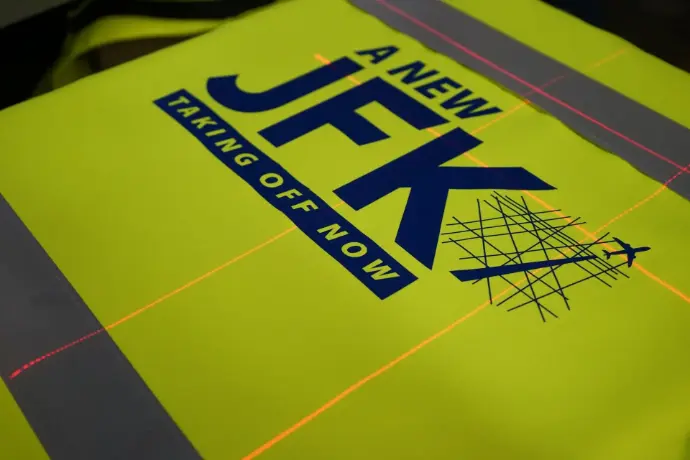Overcoming Supply Chain Challenges for Custom Merch in 2025

The world of custom merchandise is lively and always changing. Businesses and creators are always looking for new ways to offer unique products.
As we get closer to 2025, the industry faces many complex supply chain challenges. These challenges must be handled carefully. Understanding the challenges in your field is important for success.
This applies whether you work in global trade, manage custom clothing, or adapt to changes in the apparel industry.
In this article, we will explore the important supply chain problems for custom merchandise in 2025. We will also look at ways to solve these issues effectively. Let's look at how to improve global supply networks and build a strong supply chain.
The Global Supply Chain Landscape
The global supply chain operates like a vast, interconnected web linking manufacturers, suppliers, and consumers worldwide. However, this web is full of challenges. These challenges can disrupt even the best operations.
The Complexities of Global Trade

Trade policies, tariffs, and regulations are in a constant state of flux, creating an unpredictable environment for businesses. These shifts can significantly affect operational costs and timelines, necessitating a deep understanding of global trade dynamics.
For custom merch creators, it is important to stay updated on these changes. This helps in sourcing materials well and ensuring products are delivered on time. Furthermore, businesses must be agile enough to pivot strategies in response to sudden regulatory shifts.
Navigating these complexities requires not only awareness but strategic foresight. Developing relationships with trade experts and leveraging technology to monitor policy changes can provide a competitive edge. Additionally, businesses may need to engage in advocacy to influence policy decisions that affect their operations.
Rising Costs and Inflation
The ongoing increase in the costs of raw materials, labor, and shipping creates a big challenge for the supply chain. Inflation impacts every segment, from manufacturing to the final delivery of goods, demanding innovative solutions from custom merch creators. Managing these escalating costs without sacrificing quality becomes a delicate balancing act.
Businesses should look for cost-effective options. They can negotiate better rates with suppliers. They can also invest in automation to lower labor costs. Additionally, maintaining transparency with customers about potential cost impacts can help manage expectations and maintain trust.
Specific Challenges for Custom Apparel
Custom apparel is a growing part of the custom merchandise industry. However, it has its own challenges that need to be solved for success.
Sourcing Quality Materials
Identifying reliable suppliers who provide high-quality, sustainable materials is increasingly challenging. Consumers are paying more attention to sustainability.
Because of this, using eco-friendly and ethically made materials is now essential. It is no longer just a choice. This requires businesses to thoroughly vet suppliers and ensure alignment with their sustainability goals.
Furthermore, the demand for transparency in sourcing practices is growing. Businesses can benefit from adopting technologies like blockchain to provide customers with verifiable information about the origin and production of their apparel. Building strong supplier relationships and collaborating on sustainability initiatives can also drive mutual growth and success.
Managing Inventory
Effective inventory management is crucial in maintaining a balance between supply and demand. Overstocking ties up capital and increases storage costs, while understocking can result in missed sales opportunities. Custom apparel businesses need to optimize their inventory levels to meet customer demand efficiently without overproducing.
Implementing advanced inventory management systems that utilize predictive analytics can significantly enhance demand forecasting accuracy. Additionally, adopting just-in-time production methods can minimize excess inventory and reduce waste, aligning with sustainability efforts.
Meeting Consumer Expectations
Modern consumers demand not only high-quality products but also swift delivery times. Meeting these expectations necessitates efficient supply chain processes and exceptional customer service. Businesses must ensure seamless operations from order placement to delivery to maintain customer satisfaction.
Leveraging data analytics can help identify bottlenecks in the supply chain and streamline processes. Additionally, investing in customer service training and technology can enhance the overall customer experience, leading to increased loyalty and repeat business.
The Challenges of 2025
Technological Advancements
The rapid pace of technological advancement presents both opportunities and challenges. While new technologies can enhance efficiency and productivity, they also demand that businesses adapt quickly to remain competitive. Staying ahead of technological trends is crucial for maintaining a competitive edge.
Investing in research and development can help businesses harness new technologies effectively. Additionally, fostering a culture of innovation within the organization encourages employees to embrace change and contribute to technological advancements.
Geopolitical Instability
Political changes, trade wars, and international conflicts can disrupt supply chains, creating uncertainty and risk. Businesses must develop contingency plans to mitigate the impact of geopolitical instability on their operations. This involves assessing potential risks and devising strategies to ensure continuity in the face of disruptions.
Building a resilient supply chain through diversification and flexibility can help businesses weather geopolitical challenges. Engaging in scenario planning and establishing cross-border partnerships can also enhance resilience and adaptability.
Case Studies of Successful Strategies
Let's look at some companies that have handled supply chain challenges well. They set good examples for others in the industry.
Patagonia
Patagonia is renowned for its unwavering commitment to sustainability. By utilizing recycled materials and ensuring fair labor practices, they have set a high standard in the apparel industry. Their approach not only aligns with consumer values but also distinguishes them as a leader in sustainable business practices.
Patagonia's transparency in their supply chain operations has earned them a loyal customer base and a strong brand reputation. Their success demonstrates the value of integrating sustainability into core business strategies.
Nike
Nike has made significant investments in technology to optimize its supply chain operations. They use data analytics and automation to improve efficiency and lower costs. This helps them stay competitive. By leveraging technology, Nike can quickly adapt to changing market demands and enhance customer satisfaction.
Nike's focus on innovation and continuous improvement serves as a model for businesses seeking to enhance supply chain performance. Their strategic investments in technology have positioned them as a leader in the industry.
Zara
Zara's fast fashion model relies on a highly responsive supply chain. By maintaining low inventory levels and agile production processes, they can quickly adapt to shifting consumer trends. This approach enables Zara to deliver new fashion items to the market swiftly, meeting consumer demand effectively.
Zara's success underscores the importance of agility and responsiveness in supply chain management. Their skill in predicting and reacting to market changes has made them a leader in the fast fashion industry.
Conclusion
In 2025, the world of custom merchandise offers both challenges and chances for businesses. They want to succeed in a changing environment. By understanding the global supply chain, addressing apparel challenges, and creating a strong supply chain strategy, businesses can succeed.
Whether you're a small business owner or part of a large corporation, staying informed and proactive is essential. Embrace change, invest in technology, and focus on sustainability. This will help you tackle supply chain challenges and succeed in the custom merchandise industry.
By using these strategies, you will be ready to meet future demands. You can also impress your customers with great custom products.
Overcoming Supply Chain Challenges for Custom Merch in 2025